
Building for a Flexible Future
Retail is experiencing an identity crisis, as e-commerce continues to influence the way consumers shop. And while brick and mortar retail is still quite healthy, this changing consumer behavior is affecting the way we design and program retail spaces. In our thought leadership series, Retail Perspectives, we will explore this changing landscape, discuss how retailers can (and should) react, and think about how to design for the future of retail.
By: Evan Allen, Shaye Roseman, and Leili Ghaemi
Illustration by Peter Judson
Building for a Flexible Future
Over recent years retail spaces—from boutique to big box—have been emptying out at unprecedented rates1, leaving many storefronts uninhabited. This trend is not limited to urban environments; it is impacting suburban and rural real estate at even higher rates2, from retail to commercial, to industrial spaces. Consumers have rapidly adapted to the convenience of online shopping and home delivery, and increasing numbers of retailers are finding it unnecessary—and prohibitively expensive—to support a brick and mortar storefront within an omnichannel store portfolio.
Simultaneously, as millennials age and start raising families, they are also leaving cities at a faster rate, opting for dense suburban areas just outside of cities3. With these new residential populations comes the demand for new services and experiences. These consumers are still seeking an “urban” lifestyle characterized by convenience, efficiency, sustainability, density, and community engagement. Traditionally, many of these needs have been filled by suburban shopping centers, but as consumer appetite for these shopping centers changes, malls have struggled to maintain relevance in people’s lives4.
Given the overall continued health of brick-and-mortar retail5, it’s unlikely that these massive retail centers will disappear entirely any time soon—there is still immense value in the spaces themselves. But, coupled with a growing demographic that values authenticity and experience over physical objects and ownership, an opportunity is taking shape. We are at the forefront of a paradigmatic shift in the way we use, think about, and value, our retail real estate. Instead of anticipating the death of brick and mortar retail, we have the unique opportunity to innovate around better uses for these large, public spaces that meet changing consumer needs and offer a sustainable path forward for the businesses they house now, and in the future.
When considering this unique challenge, we can look to urban design for some key tenets to success in designing for dense environments.
While their massive scale can sometimes be considered a detriment, shopping centers can take advantage of their size by replicating the diverse tenant mix of a dense urban environment. One particular appeal to this type of environment is the ability to, for example, get a coffee, buy some groceries, take a yoga class, look at a pair of shoes, and pick up your dry cleaning, all on the short walk from your subway stop to your apartment. But somewhere in the evolution of the suburban mall their offerings erred on the side of homogenous and consumers lost the “whole city under one roof” aspect of the experience.
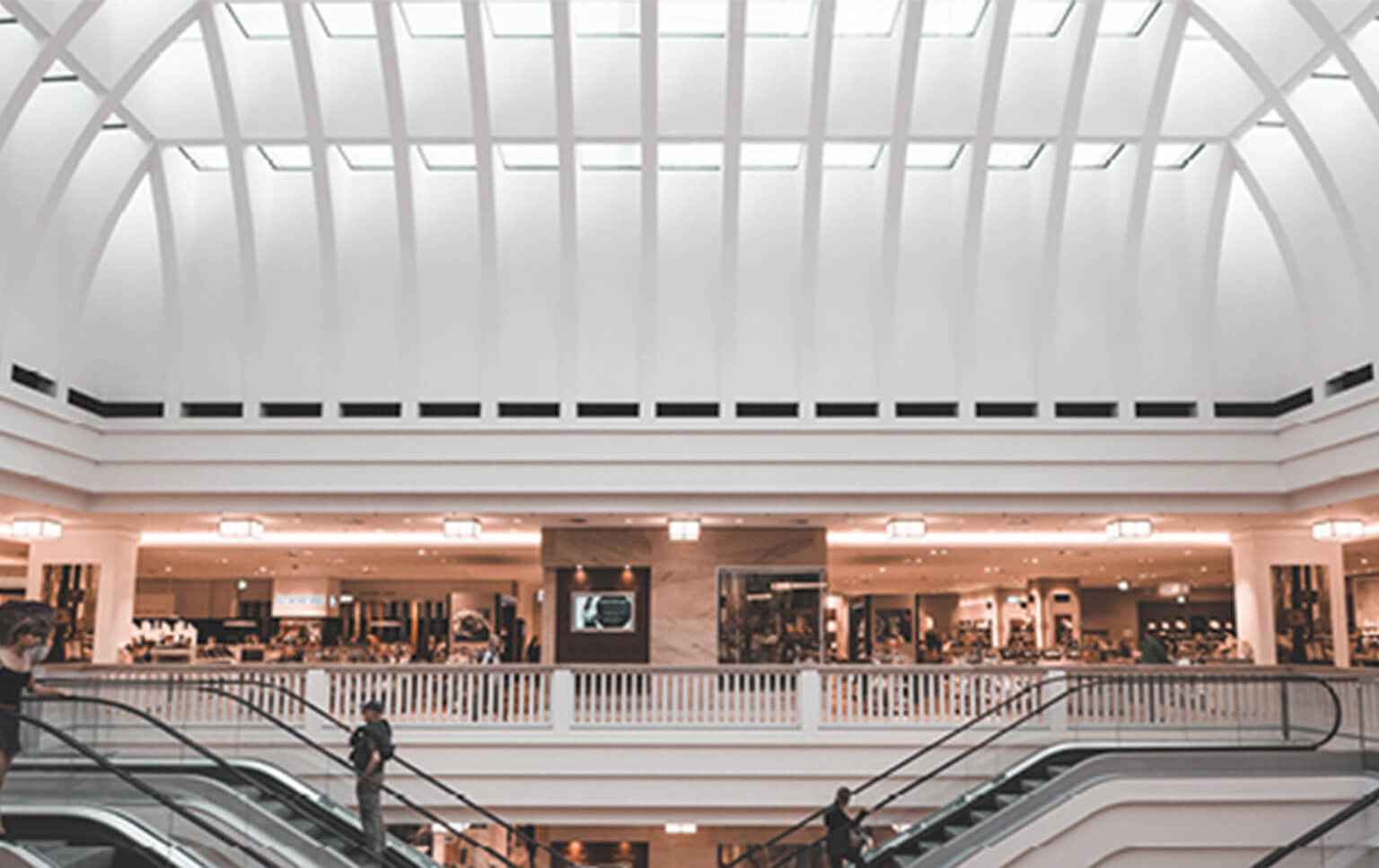
Source: Robin Speilmann via Unsplash
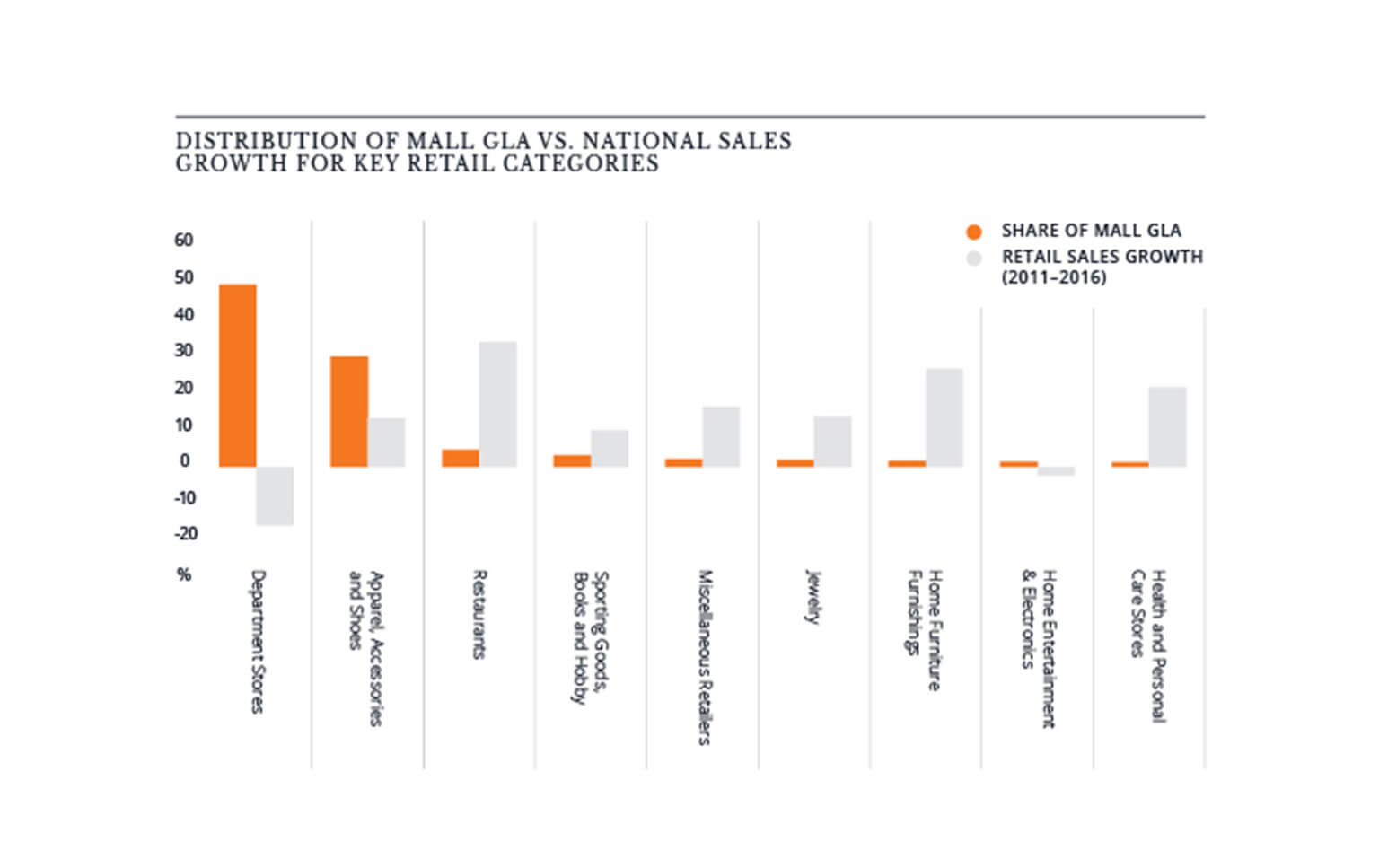
Source: CBRE Research, US Census Bureau, ICSC, August 2017
Currently, 75% of the average mall’s footprint is devoted to department stores and apparel, which are the two slowest-growing retail categories, and among the highest for e-commerce penetration. Malls would benefit from moving toward a tenant mix with a greater ‘high-growth, low-e-commerce’ category presence, including stores that are better adapted to consumer shopping demands, like food and beverage, beauty, and entertainment.
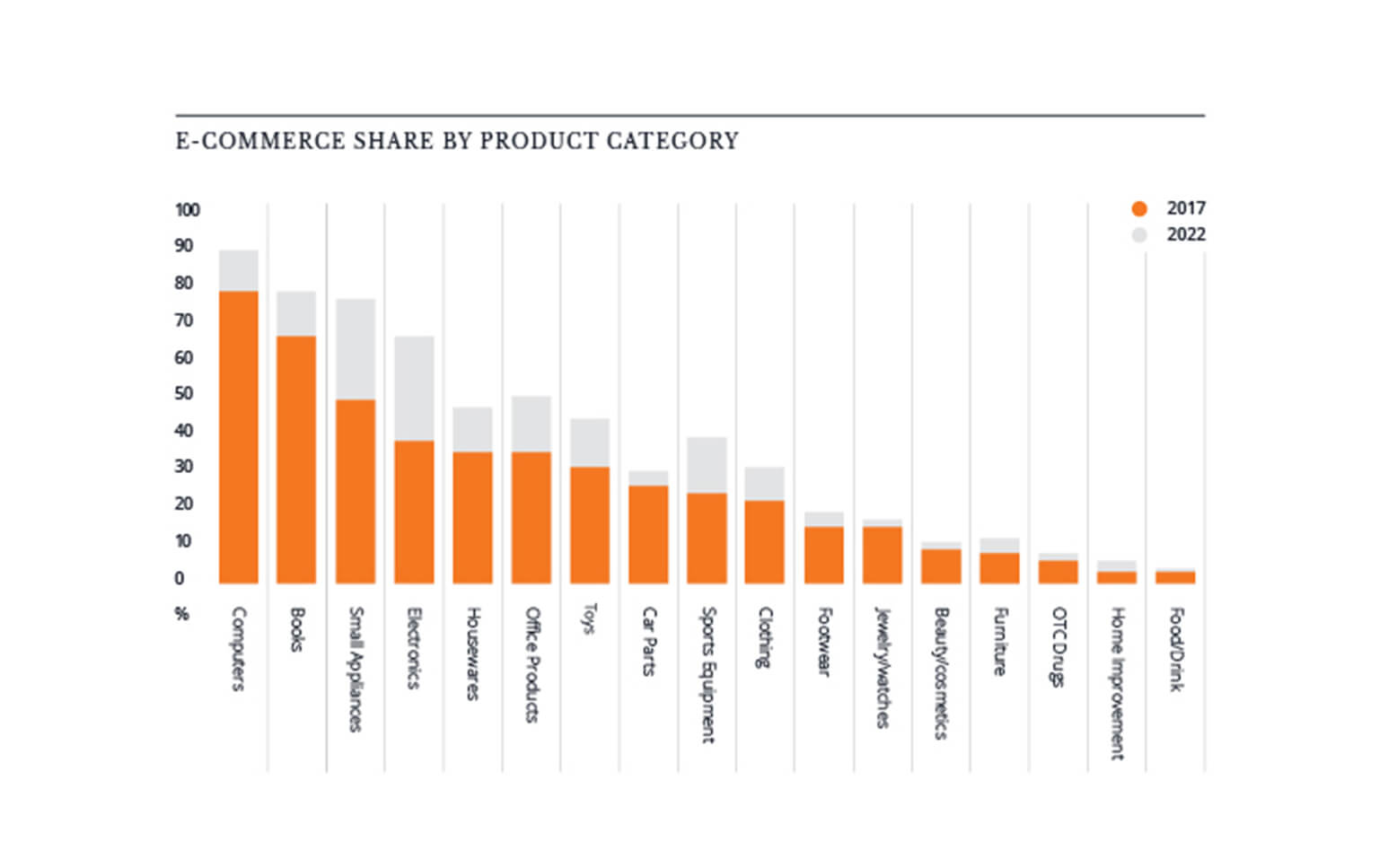
Source: Forrester Research 2018
When we can get almost anything delivered to our homes at the click of a button, consumers of today and tomorrow need a compelling reason to leave their comfort zones. The millennial desire for authentic experiences is real, and consumers expect to gain something meaningful when they visit a branded environment. Retail centers need to evolve beyond simply being a destination to fill shopping bags, and enter into a reciprocal, meaningful relationship with consumers, creating a long-lasting engagement and brand relevance.
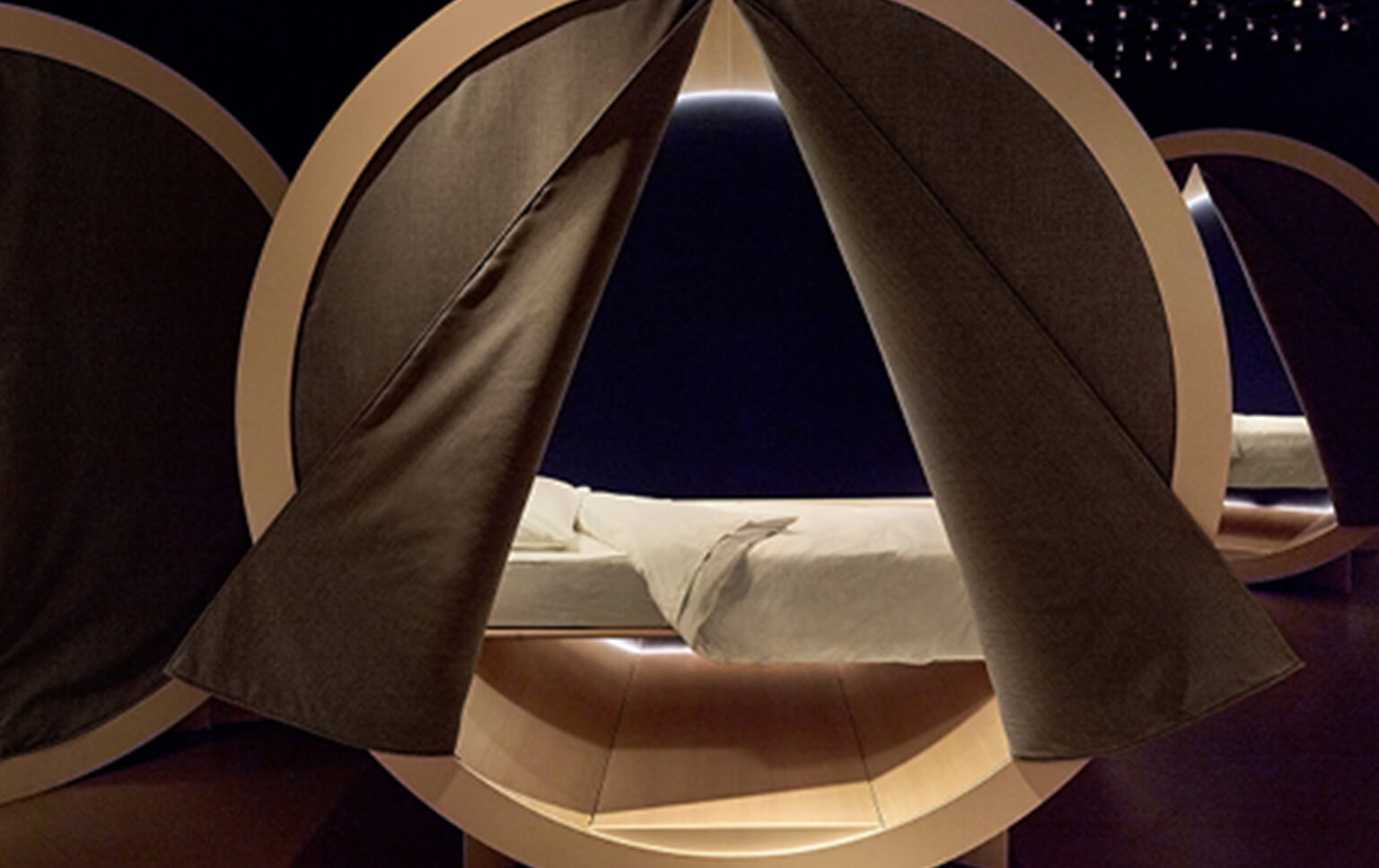
Source: Casper
The Dreamery is a space created by the mattress company Casper. On the surface, guests pay $25 for 45 minutes of access to a napping pod, pajamas, an eye mask, ear plugs and a toothbrush. More importantly though, Casper is providing an intimate brand touch point and a quiet escape from the urban hustle. The space de-stigmatizes the mid-day nap, and therefore positions the brand as promoter of health and wellness, offering you an experience you can’t easily find outside of your home. This is part of a growing trend to maintain a brick and mortar storefront that doesn’t sell any goods, but serves to elevate the brand’s perception in consumers’ minds through meaningful real life experiences.
In a time when consumers are looking for a holistic lifestyle approach from their retail experiences, aligning one’s product with other complementary brands can be an advantage to both the consumer and the business. Taking a cue from the rise of space-sharing and time-sharing industries, retailers should be thinking about brand adjacencies as mutually beneficial rather than competitive. Multiple brands within a unified space attract new customers and augment each brand’s image, while sharing a space across day-parts reduces the cost per square foot and opens up new opportunities for monetization.
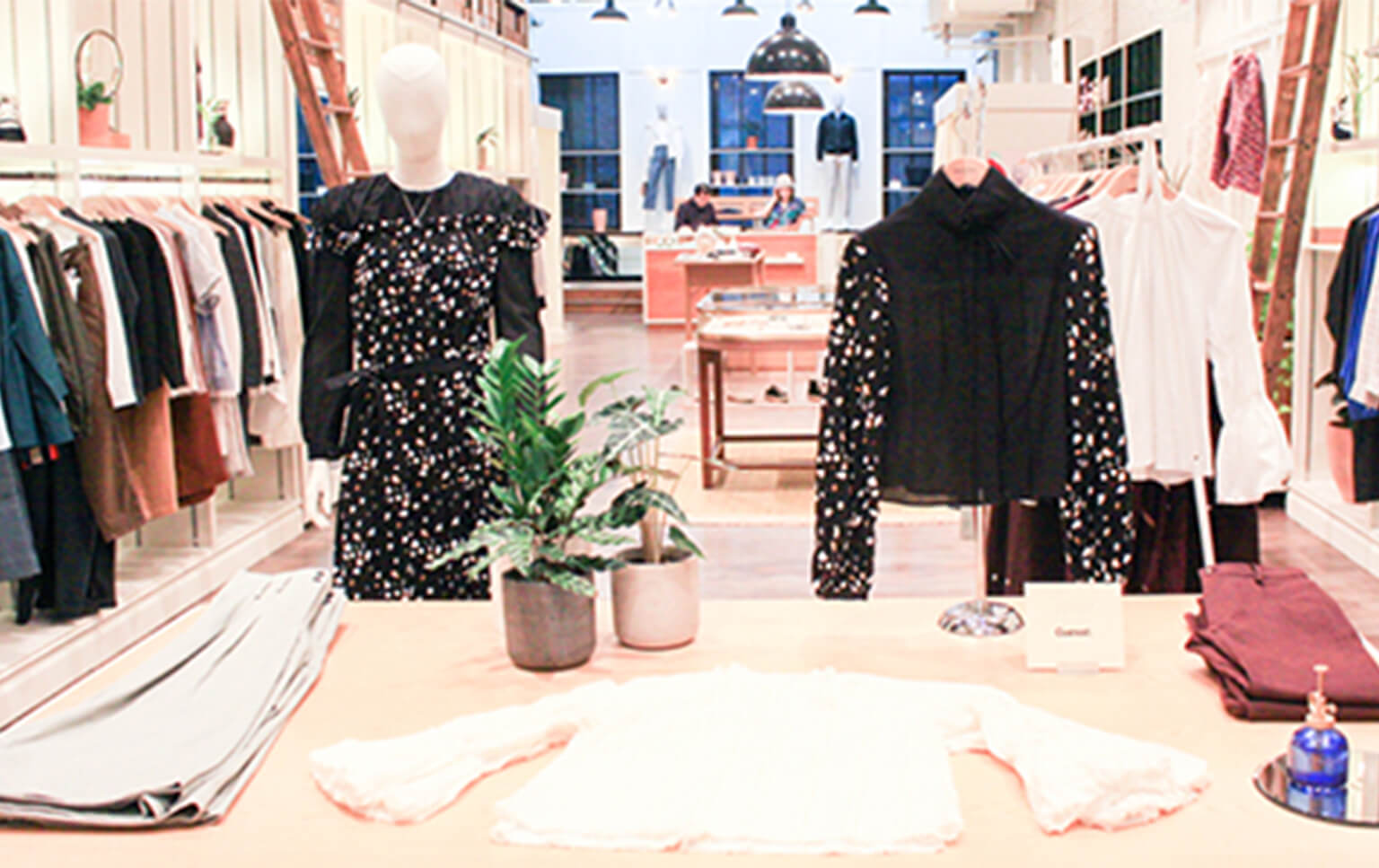
Source: Fahrenheit 212
Guesst is an online platform that enables retailers to maximize the use of their spaces over time. They have created a marketplace where brick and mortar retailers can set prices to rent out subdivisions of their spaces to other brands or services, bolstering the perception of each brand through adjacency. This gives young, independent brands a physical space to sell their products without the unfavorable terms or price of a lease. It also mitigates costs for the primary tenant, and allows them to refresh their store appearance and offerings without significant capital costs.
In an environment where we are almost always in public, one key feature of a dense urban environment is frequent moments of semi-privacy, or opportunities to disengage. These come in the form of benches, parks, and other little “escapes” that, even though technically public, offer people a moment to remove themselves from the scene. Existing shopping center design tends toward the fish-bowl ideal where everyone is always on display. But if we aim to shift our focus from ‘sales per square foot’ to ‘influence per square foot,’ we can also shift our mindset more toward the ideal user experience rather than the ideal sales experience. Taken in conjunction with a broader tenant mix that includes more F&B offerings, this suggests that we should aim to create environments in which people feel comfortable, across a wider spectrum of public-to-private offerings, creating more micro-opportunities for brand influence.
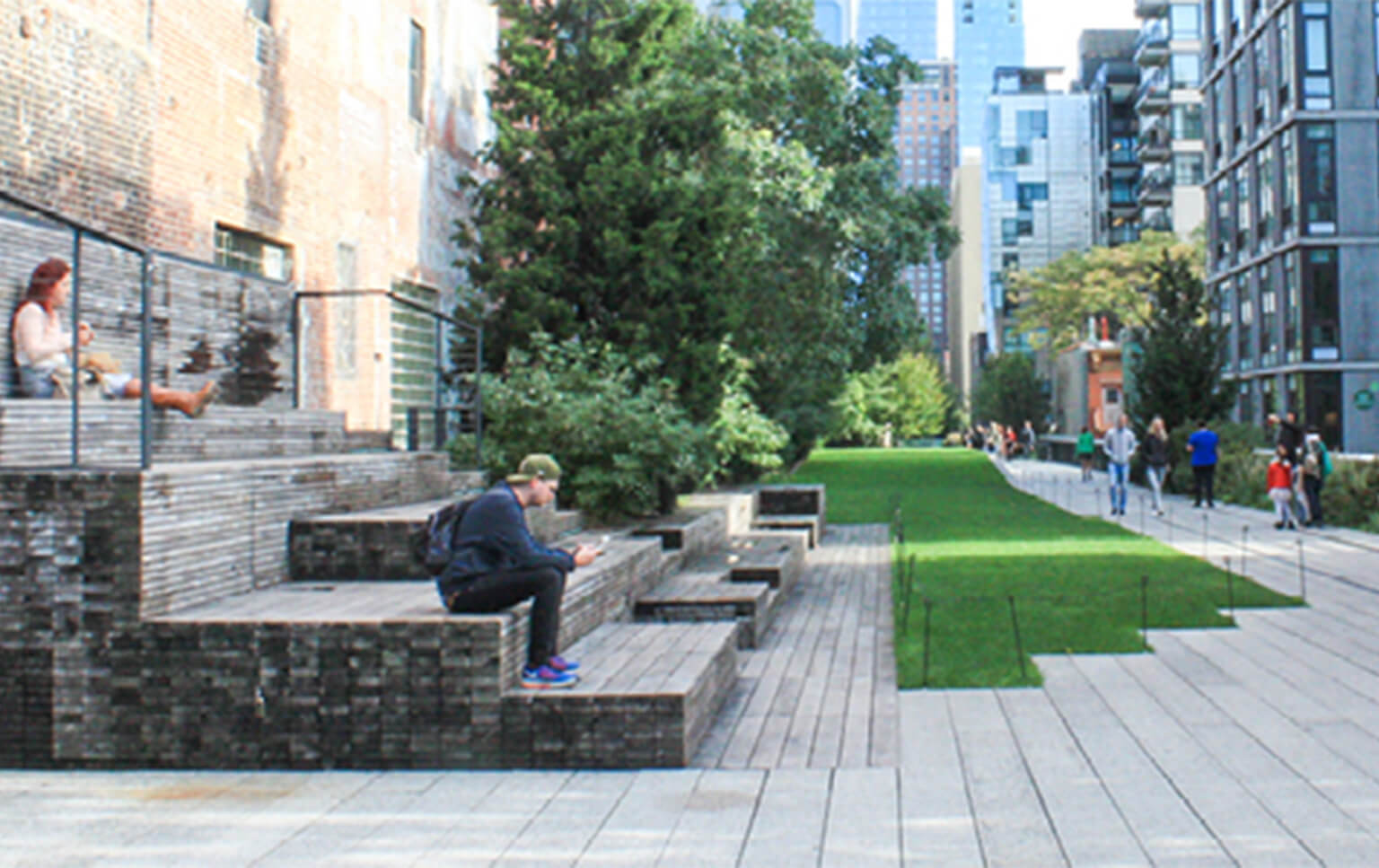
Source: Fahrenheit 212
The Highline, designed by James Corner Field Operations, Diller, Scofidio + Renfro and Piet Oudolf, is public park built on repurposed elevated freight train tracks in the Chelsea / Meatpacking neighborhoods in New York City. The park, which is one and a half miles long, presents visitors with a series of urban-industrial-agricultural vignettes. As a huge tourist and local destination, it can be crowded even by NYC standards, but this “agri-tectural” walk is punctuated by many varied opportunities to relax, and disengage. There are areas specifically designed for moments of privacy, play, rest, voyeurism, and entertainment. In many ways it is the perfect metaphor for city life, offering a frenetic public experience while simultaneously indulging and respecting the desire for privacy and anonymity.
Many big-box stores are currently designed with a single purpose in mind, and their underlying infrastructure is designed to serve that purpose. This may have been a cost-effective way to build 30 years ago, but branded environments today need to be far more nimble and able to adapt to different functions, uses, and modes. Taking cues from a high-turnover model and a national trend toward shorter, more flexible lease terms, we should anchor our designs in a dynamically flexible infrastructure that can adapt more easily to different needs. This not only opens up the possibility for different types of tenants, but it also lets us be more nimble and act more quickly during tenant turnover, reducing down time.
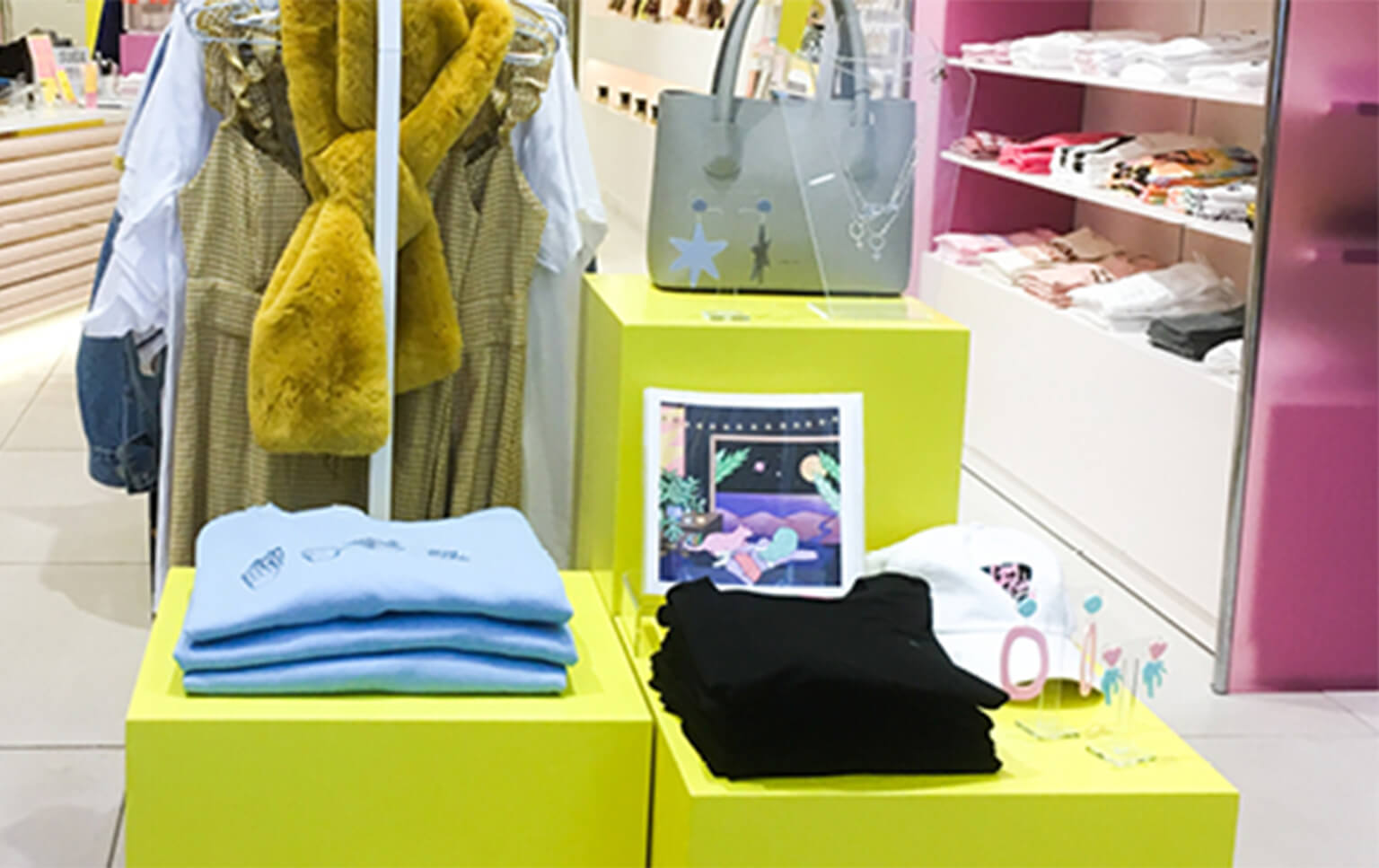
Source: Fahrenheit 212
Bulletin is a storefront that divides its space into displays of varying sizes and rents the spaces to different retailers on a monthly basis. Its simple, clean, modular design allows the store to reconfigure its displays quickly and easily, reducing downtime during product changeover.6
As retailers consider repurposing empty spaces and designing for a future retail experience, this intentional flexibility becomes a key design principle. From the business perspective, a higher, more efficient utilization of spaces can flip square feet from a liability to an asset. And for the consumer, whose tastes and needs are always changing, flexibility allows us to provide greater moments of surprise and delight, and to satisfy the desire for more meaningful interactions by responding more quickly to our changing audience. If we accept the fact that now, more than ever, change is constant in the areas of retail and customer experience, repurposing our out-of-date spaces with flexibility in mind will allow us to serve an ever-changing population more efficiently, and with greater long term sustainability.
1. Garfield, Leanna, Business Insider, “Here Are The Hundreds of Storefronts That Are Sitting Empty in New York City.”
2. Bliss, Laura, City Lab, “The Ticking Time Bomb for Suburban Retail.”
3. Fox, John. Sen, Conor. Smith, Noah. Bloomberg, “Millennials Are Driving the Suburban Resurgence.”
4. Sanburn, Josh. Time. “Why The Death of Malls is About More Than Shopping.”
5. Koetsier, John, Inc., “Taps, Clicks, Bricks: How Retail is Changing in America.”
6. Ha, Anthony, Tech Crunch, “Bulletin offers a flexible approach to shared retail space.”

Evan is an Associate Creative Director. In his role at Fahrenheit 212, Evan is responsible for design innovation with a focus on retail spaces, environments, and branded user experiences. He is particularly interested in creating holistic experiences that consider our built environment in conjunction with the technology that augments our experience within a space.
We respect your privacy
We use Cookies to improve your experience on our website. They help us to improve site performance, present you relevant advertising and enable you to share content in social media. You may accept all Cookies, or choose to manage them individually. You can change your settings at any time by clicking Cookie Settings available in the footer of every page. For more information related to the Cookies, please visit our Cookie Policy.